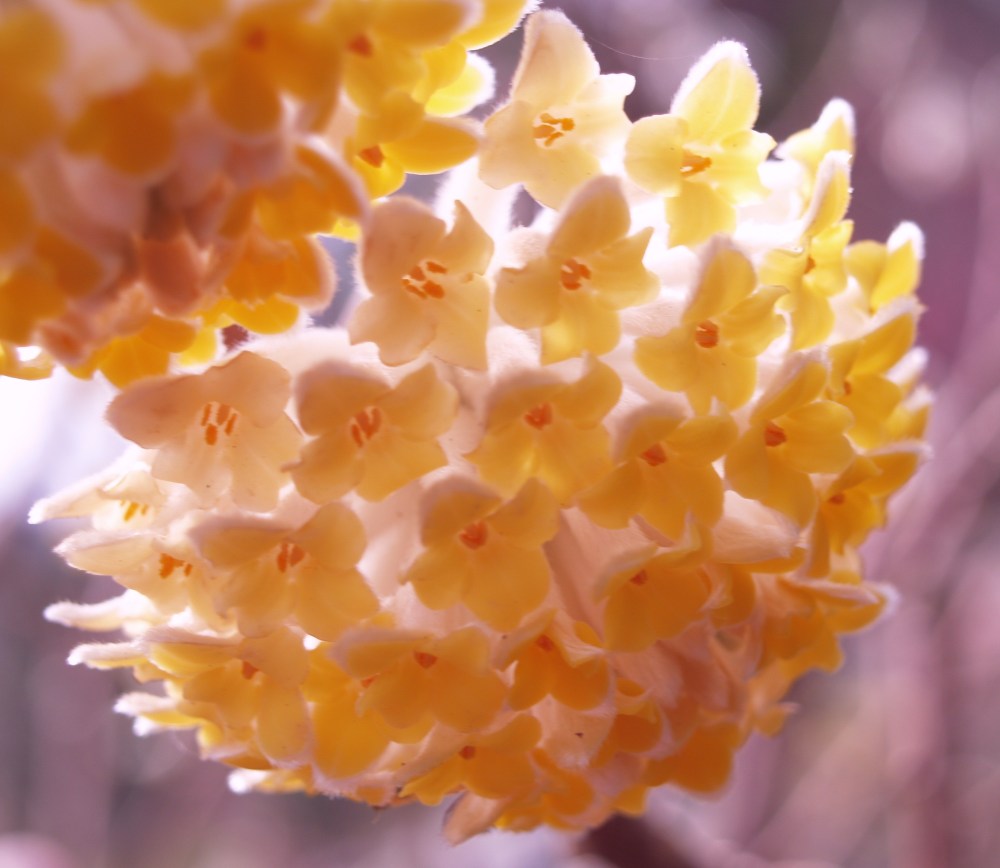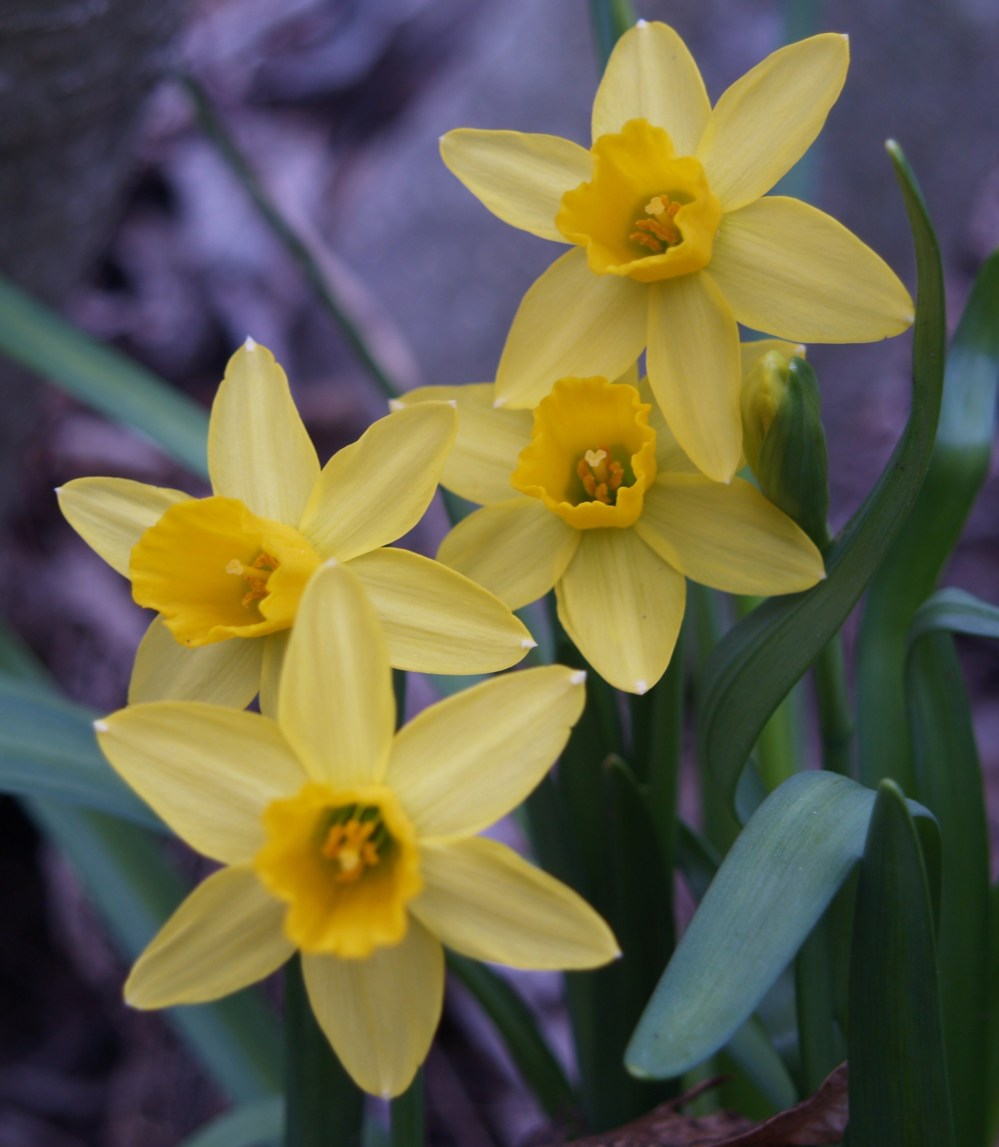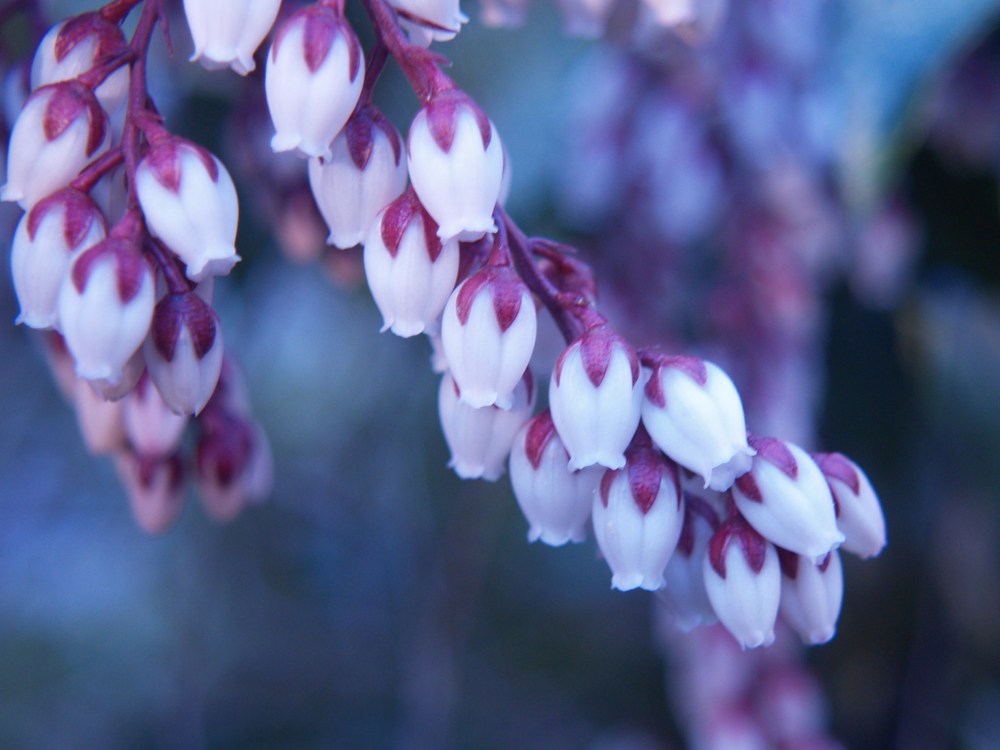No more than a mile from my home two star magnolias against a brick wall in full sun are in full bloom. In my garden Royal Star magnolia (Magnolia stellata ‘Royal Star’) remains in bud, though I can feel the tightness of the bud expanding, and if temperatures remain so warm as today’s seventy degrees it will be only a few days before it is showing color.
Again this year, color is showing in the buds of Dr. Merrill earlier than Star magnolia. The upright growing Dr. Merrill is in a slightly sunnier location, and grows above the surrounding trees rather than the shrub-like Star magnolia that is nestled beneath overhanging branches of large maples. 
I have long recognized that my low lying garden is a bit colder than its surroundings. The sliver of mature forest that runs along the southwest boundary shades the winter sun for most of the day, though it provides no relief from the more northernly path of the summer sun. The early blooming magnolias and Okame cherry (above), daffodils and crocus, snowdrops, witch hazel, sarcococca, winter jasmine, edgeworthia (below) , pieris (at top of page), and mahonia flowering in my garden are days later than my neighbors’, and perhaps weeks later than fifty miles east in Washington, D.C..
, pieris (at top of page), and mahonia flowering in my garden are days later than my neighbors’, and perhaps weeks later than fifty miles east in Washington, D.C..
I suspect that photos taken in the garden this afternoon might be “yesterday’s news” to readers to the south, the east, and perhaps down the street. ‘February Gold’, the common early dwarf narcissus (below), began to bloom under the wide spreading Jane magnolia two days ago, but just across the street a mixed planting of narcissus has been blooming from three days earlier. However numerous the flowers might be, this garden will never be the first to arrive.
